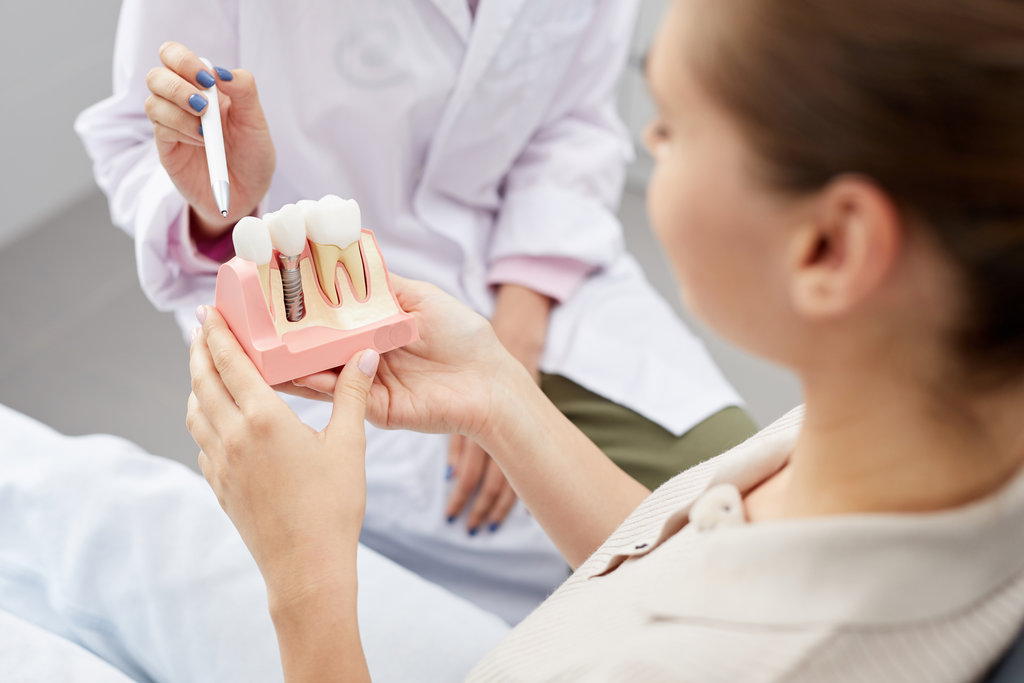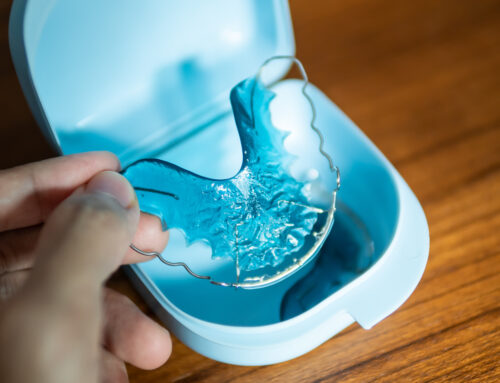 Dental implants create unique challenges for orthodontic treatment, but they don’t eliminate your options for achieving a perfectly aligned smile. Many patients assume having implants means traditional braces or Invisalign are no longer possible. However, modern orthodontic techniques offer several effective approaches for moving natural teeth around fixed implant positions.
Dental implants create unique challenges for orthodontic treatment, but they don’t eliminate your options for achieving a perfectly aligned smile. Many patients assume having implants means traditional braces or Invisalign are no longer possible. However, modern orthodontic techniques offer several effective approaches for moving natural teeth around fixed implant positions.
At Clemente Orthodontics, we’ve been successfully treating patients with dental implants since the 1970s, developing specialized approaches that work around implant limitations while achieving excellent results. Our multigenerational family practice has the experience to evaluate your specific situation and recommend the most effective treatment approach for your unique combination of natural teeth and implants.
How Dental Implants Affect Orthodontic Treatment
Dental implants function differently from natural teeth during orthodontic movement, creating both opportunities and limitations that must be carefully considered in treatment planning. Unlike natural teeth, which can be moved through the jawbone using controlled pressure, implants are permanently fused to the bone and cannot be repositioned orthodontically.
This fundamental difference means treatment plans must be designed around existing implant positions, using them as fixed reference points while moving surrounding natural teeth to create optimal alignment and bite relationships. The location, number, and condition of your implants significantly influence which treatment options may be most effective.
Successful treatment requires precise planning to ensure natural teeth move into positions that complement rather than conflict with implant placement. Advanced imaging and treatment simulation help predict outcomes and identify potential challenges before treatment begins.
The timing of implant placement relative to orthodontic treatment also plays a crucial role in determining the best approach. Patients who received implants before considering orthodontic treatment face different challenges than those who can coordinate both procedures.
Pre-Treatment Evaluation Considerations
Comprehensive evaluation of patients with dental implants requires assessment beyond typical orthodontic concerns, including implant stability, surrounding bone health, and the relationship between implants and natural teeth. The position of existing implants relative to ideal tooth positions determines how much natural tooth movement is possible.
Crown condition and fit may need evaluation if significant tooth movement is planned, as changing positions of adjacent teeth can affect how implant crowns align with the bite. Some patients may need crown adjustments or replacements following orthodontic treatment to achieve optimal function and aesthetics.
Bone density and gum health around implants must be assessed to ensure orthodontic forces applied to nearby natural teeth won’t negatively impact implant stability. This evaluation helps determine safe force levels and treatment approaches.
Treatment Options for Implant Patients
Several orthodontic approaches can effectively treat patients with dental implants, each offering different advantages depending on your specific situation and treatment goals. The key is selecting an approach that maximizes natural tooth movement while respecting implant limitations.
Traditional Braces Adaptations
Traditional braces remain highly effective for patients with dental implants, offering precise control over natural tooth movement around fixed implant positions. Brackets are placed only on natural teeth, with special considerations for force distribution to avoid placing excessive pressure on teeth adjacent to implants.
Treatment planning may involve modified arch wire configurations that accommodate implant positions while still achieving desired tooth movements. The fixed nature of implants can actually provide additional anchorage for moving other teeth, sometimes making certain movements easier to achieve.
Attachment modifications may be necessary when implants are located in positions that would normally receive brackets or bands. Alternative attachment methods or treatment sequences can work around these limitations effectively.
Invisalign® Considerations
Invisalign® treatment can be highly effective for implant patients, particularly when tooth movements don’t require significant forces near implant sites. The removable nature of aligners offers advantages for maintaining oral hygiene around implants during treatment.
Custom treatment planning with Invisalign® technology allows for precise movement simulation that accounts for implant positions from the beginning of treatment. This advanced planning helps ensure realistic expectations and optimal outcomes.
Attachment placement on implant crowns requires careful evaluation, as not all crown materials and designs can accommodate traditional Invisalign® attachments. Alternative approaches may be necessary when attachment placement on implants isn’t feasible.
Hybrid Treatment Approaches
Some patients benefit from combination approaches that utilize both fixed and removable appliances strategically positioned to work around implant limitations. These hybrid treatments can maximize treatment options while addressing the unique challenges presented by each patient’s implant configuration.
Partial treatment focusing on specific areas may be recommended when comprehensive treatment isn’t feasible due to implant positions. This targeted approach can still achieve significant improvements in function and aesthetics.
Sequential treatment phases may be necessary when complex movements are required, allowing for careful monitoring of implant and natural tooth responses throughout the process. This cautious approach helps ensure both implant stability and orthodontic success.
Long-Term Success Factors
Long-term success with orthodontic treatment in implant patients requires ongoing maintenance and monitoring to ensure stable results. The inability to move implants means any future dental changes must be carefully planned around their fixed positions.
Retention protocols may need to be modified to account for implant positions and their impact on surrounding natural teeth. Custom retention appliances often work more effectively than standard retainers for patients with complex combinations of implants and natural teeth.
Regular follow-up appointments help monitor both orthodontic stability and implant health over time, allowing for early intervention if problems develop. This ongoing care helps ensure lasting treatment success.
Achieving Your Best Smile
Having dental implants doesn’t mean you have to accept less than optimal tooth alignment or bite function, as modern orthodontic techniques offer effective solutions for most implant patients. The key is working with experienced professionals who understand how to design treatment plans that work with rather than against your existing implants.
We’ve been helping patients with dental implants achieve beautiful, functional smiles for decades, combining our multigenerational experience with the latest orthodontic technology and techniques. As the number one Invisalign® provider in New York and New Jersey, we have extensive experience adapting both traditional and modern treatment approaches to work effectively for patients with implants. Contact us at (845) 638-6646 for New City, (201) 484-0600 for Woodcliff Lake, or (201) 447-2888 for Ridgewood, or schedule your consultation online.

Medically reviewed by:
The Orthodontic Team at Clemente Orthodontics
December 2, 2025
At Clemente Orthodontics our expert dental team takes great care in providing orthodontic treatment and Invisalign solutions for our patients.





